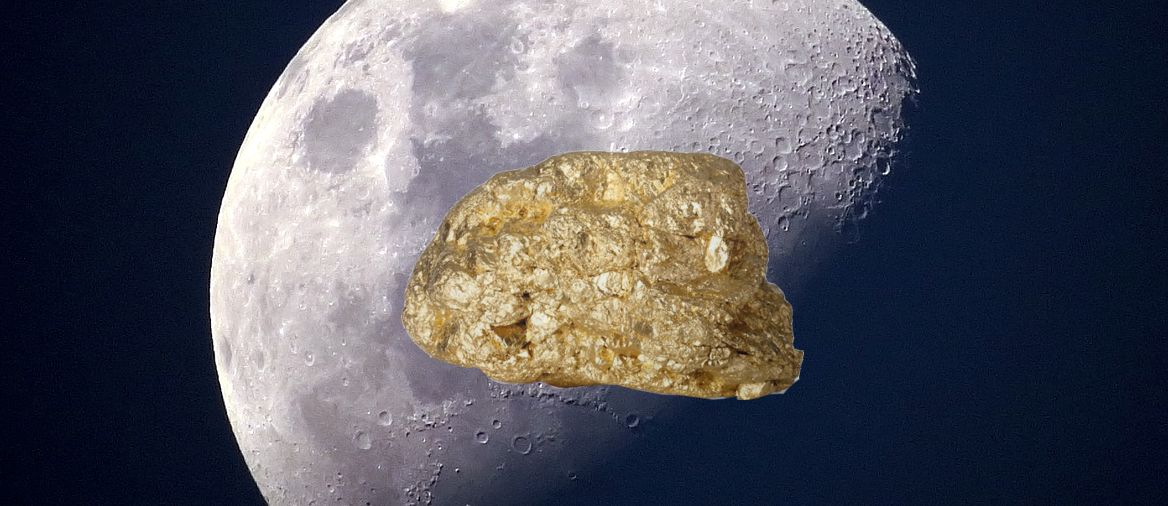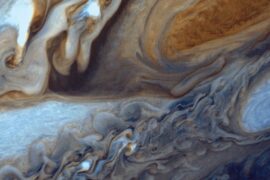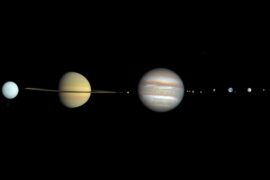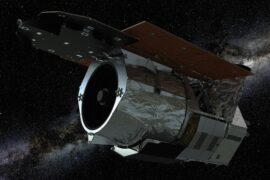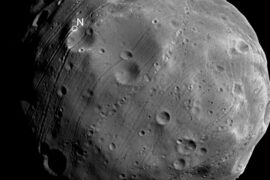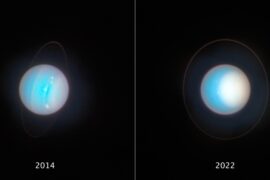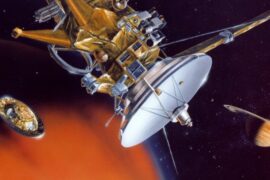The Moon has always held a special place in our collective imagination. It’s our natural satellite, and its silvery glow has fascinated poets, scientists, and dreamers for centuries. But beyond its poetic allure, have you ever wondered if there’s something more tangible up there? Something like, say, gold?
The idea of precious metals on the Moon has sparked the imagination of science fiction authors who have imagined bases and mining colonies on the Moon. But it is also a topic that has captured the attention of scientists, researchers, and even entrepreneurs. While the Moon may not be paved with gold, it does hold some intriguing secrets beneath its desolate surface.
The Lunar Landscape
When we look up at the sky at night, all we see of the Moon is its grey surface. This is a fine layer of dust and small pieces of rock called regolith. Think of it like sand except it is only a few inches thick and covers the rocky solid surface of the Moon.
This regolith layer is why when the Apollo astronauts like Neil Armstrong walked on the Moon, they left behind clear footprints on the Lunar soil.
Below the regolith, there is a more solid surface made of all kinds of minerals and metals. That’s where we could find gold. But how would it have gotten there?
The origin of gold
Gold is formed in the heart of stars by the process of nuclear fusion along with other heavy elements. When a massive star explodes violently into a supernova, all these materials scatter throughout the cosmos.
Sometimes, these materials end up being part of large clouds of dust and gas that surround newly formed stars called protoplanetary discs. Over long periods of time, pieces of this cloud clump together to form meteoroids, asteroids, comets, and even planets and moons.
This is how Earth got most of its gold. And since it is very likely that the Moon was at some point a piece of Earth that was ejected when another planet collided with ours, then it would be natural to assume that there would be at least some gold on the Moon.
But has this actually been confirmed?
Is there gold on the moon?
Yes! There is gold on the Moon. But how do we know? Well, it has actually been confirmed multiple times.
Between 1969 and 1972 the Apollo missions brought a considerable quantity of samples of lunar rocks for study. These rocks have been analyzed many times over the years and scientists have confirmed that they contain small traces of gold as well as iron, silver, mercury, and other materials. In general, they have determined that the Moon has a very similar composition to Earth and therefore we share a lot of the same elements except in different quantities.
A second confirmation of gold on the Moon occurred in 2009 when the Lunar CRater Observation and Sensing Satellite (LCROSS) impacted a Lunar crater to collect material and study its composition. The main purpose of the mission was to look for the presence of water on the Moon – which was found, by the way – but along the way, they were also able to find other elements, including gold.
The Lunar Gold Rush
So, if there’s gold on the Moon, why aren’t we rushing to mine it? Well, it’s not that simple. The challenges of lunar mining are immense. The lunar environment is harsh, with a lack of atmosphere, and high levels of radiation. Extracting and transporting resources from the Moon would require advanced technology and substantial investment.
Cost would also be a major issue as it would be too expensive to mine.
On top of that, some scientists are worried that mining the Moon too much could alter its structure in ways that we can’t predict. This could affect its orbit around the planet which in turn would change the tides of the oceans in potentially dangerous ways.
Despite the challenges, there are compelling reasons to explore the possibility of mining the Moon for gold and other resources. For one, it could serve as a stepping stone for future deep-space exploration. Establishing mining operations on the Moon could provide a valuable testing ground for technologies needed for missions to Mars and beyond.
Additionally, the Moon could become a source of rare and valuable resources for Earth. As our planet’s population continues to grow, the demand for precious metals and minerals increases. Accessing these resources from space could alleviate some of the environmental impact associated with traditional mining on Earth.
It’s worth noting that international agreements like the Outer Space Treaty of 1967 govern space exploration and resource use. These agreements emphasize the peaceful use of space and the avoidance of harmful contamination. Any future lunar mining activities would need to adhere to these principles.
In conclusion, while we can’t say with certainty that there’s a gold rush waiting for us on the Moon, the possibility is there. As technology advances and our understanding of the lunar environment grows, we may one day see prospectors venturing to the Moon in search of precious metals and other valuable resources. Until then, the Moon remains a symbol of human curiosity and the uncharted frontiers of space.
Related: Is there oil on the Moon?
Summary
- There is gold on the Moon but probably in small quantities
- Traces of gold have been found by analyzing Lunar rocks
- Mining gold on the Moon is probably not worth it due to the cost, difficulty, small quantities, and potential environmental dangers
Enjoyed this article?
Get daily 10-minute PDFs about astronomy to read before bed!
Sign up for our upcoming micro-learning service where you will learn something new about space and beyond every day while winding down.

